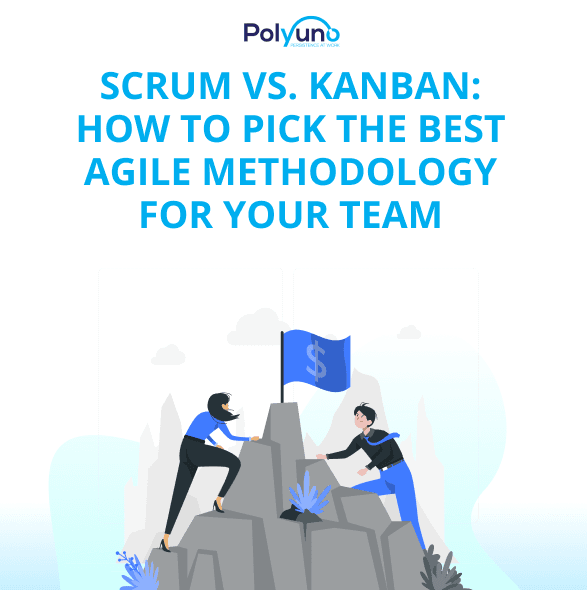
Agile methodology has worked wonders for numerous organizations. It focuses on flexibility, continuous improvement, and speed. The rise of agile software development has given the terms Kanban and Scrum a new meaning.
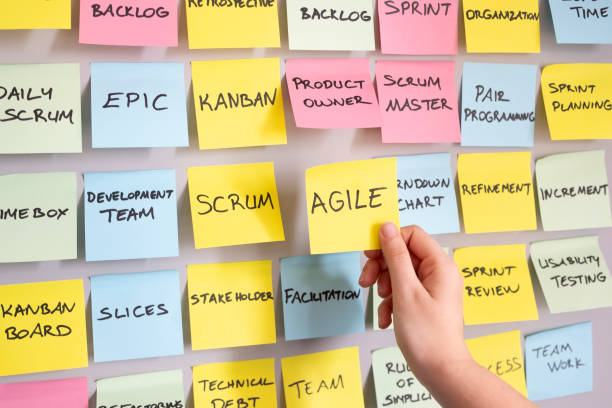
Kanban and Scrum are used in Agile practice to help teams visualize and improve software development processes to develop better products.
These terms are frequently used, but many people confuse them or think they’re the same thing. It is not true. As they are both agile frameworks, you can expect them to have certain similarities.
But when you’re working on a particular project, you have to identify which framework is best suited for your agile team. This is why knowing the differences between Scrum and Kanban is essential.
This article will help you understand the similarities and differences between Kanban and Scrum and when to choose which framework to get the best out of your agile team.
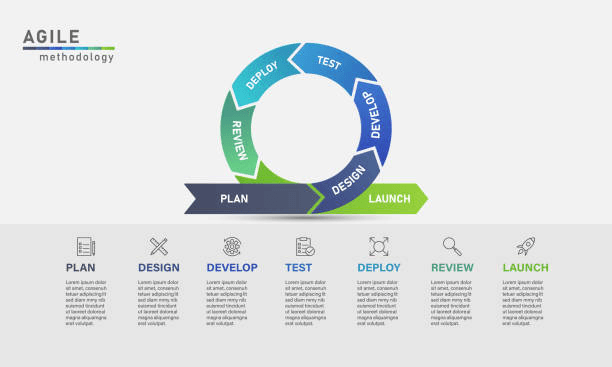
Agile Software Development is an umbrella term for a set of frameworks and practices that break down complex projects into small manageable goals.
You are working towards these goals while adding new plans based on your user’s requirements and feedback.
The agile methodology follows a set of guidelines under the Agile manifesto, which ensures consistent progress and collaboration during the development.
The main benefits of the agile methodology are:
There are many agile frameworks and methodologies. The most popular are Scrum, Kanban, Extreme Programming(XP), Iterative Development, and many others.
While each of these has its unique qualities, they all incorporate the principles of agile when developing a product.
Scrum is a framework within which people can address complex adaptive problems while productively delivering products of the highest possible value in a time-boxed setting.
With scrum, you work in these simple steps:
In Scrum, low-level requirements are only defined at the beginning. In this practice, optimizations of product requirements are an integral part of the project.
The Scrum framework is based on three pillars:
Scrum works on self-organizing cross-functional teams and usually deals with conditions that are likely to change quickly.

Kanban means “billboard” in Japanese. Kanban is a visual management system that uses cards to represent projects, tasks, or items and organizes them on a board to manage the overall workflow better.
A well-planned Kanban board keeps all your team members collaborating and informed. The structure of Kanban-focused teams is based on the project workflow.
Kanban is based on these two principles:
Kanban focuses on providing more value to end-users by eliminating waste and visualizing workflow.
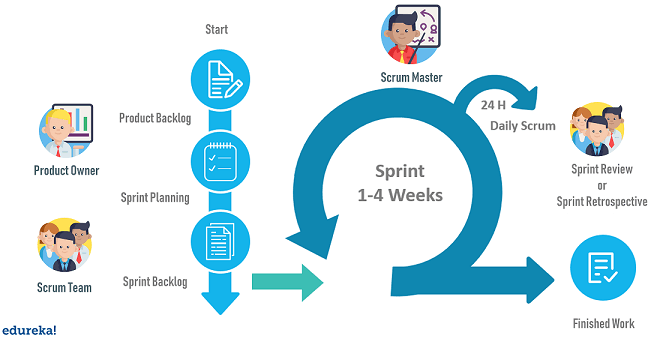
Scrum works by breaking a complex project into smaller component terms. Scrum teams focus on tackling one component at a time.
After each incremental step, the scrum team re-evaluates what direction the product should take and the most efficient process for realizing the final product. Scrum allows you and your team to inspect and adapt your product process and plans more quickly.
The critical elements of Scrums are:
All good products start with a goal. The product owner decides what the scrum team is going to make based on the customer’s requirements.
The development team works collaboratively to create the product. Scrum Master ensures that the team understands everything.
Kanban is a method of visualizing your workflow. This is accomplished using a Kanban board.

Kanban cards are typically arranged on the Kanban task board following their stage of completion. Every project, initiative, and feature is assigned to one of the columns on the Kanban Board.
The most basic boards have three columns:
Everyone knows the status of every item under consideration with this minimal sorting of work. When an item leaves the "In Progress" column, another can take its place. It avoids having too many items in development, which could overburden development resources.
Kanban follows these two principles:
First, you collect the work required for a project and document it on the cards. The cards are then placed on the kanban board. The board is split into categories of work progress. Teams can add more categories to visualize their process better.
Kanban focuses on maintaining a continuous task flow and delivery. The team is never given more work than it can handle.
Kanban is well-known for its simplicity, and it works best when the board is not complicated.
Both of these frameworks are based on pull scheduling, ensuring that the quality product is delivered to the customer in the shortest possible time.
A pull system allows you to start new work only when there is customer demand for it. The goal here is to build products based on requirements and not on estimations. This way, your company can reduce waste activities in production.
Both scrum and kanban platforms tend to limit the work in progress. They put strict limits on the amount of work in progress.
Scrum and kanban both allow large and complex tasks to be broken down and completed efficiently.
In scrum, sprints are executed. The sprint is a timebox during which the team produces a potentially shippable product increment. Sprints have consistent durations throughout a development cycle. A new sprint starts after the conclusion of the previous sprint.
In kanban, there are no required time boxes or iterations. It works in a continuous delivery flow system, and limits work in progress to achieve higher speed, better focus, and productivity.
Scrum has a set of mandatory roles that you must implement. The product owner, scrum master, and a development team.
Each position has its own set of responsibilities, and they must work together to achieve the desired goal. Scrum teams are self-organizing, and everyone is equal, having different responsibilities.
Kanban has no prescribed roles. There might be an agile coach, but there is no kanban master like scrum who runs smoothly. The entire team works collaboratively.
In scrum, the team commits to a specific amount of work for each iteration. Commitments are made based on previous sprints.
In kanban, the commitment is based on capacity. Work in progress limits team members from working on multiple tasks. Everybody commits to finishing what they have started before engaging in new. They only take up new work items if it’s within their limit.
In scrum, planning happens iteratively at the beginning of each sprint. It helps set clear and specific targets that the scrum team should complete during the sprint. It also brings everybody on the same page.
No planning occurs in kanban. Instead of planning for a more extensive period, kanban teams often plan based on past workflow data. It includes work types, size, classes of service, and various other factors.
Scrum limits work in progress per iteration. The development team has to commit to the number of tasks they can accomplish during the sprint.
In kanban, teams assign a limit to the number of cards in any active work columns. No new work can enter the column when the limit is met until a task is completed and moved to the next column.
Once the execution of the scrum sprint begins, you aren’t allowed to add any new requirements. Changes during the sprint are strongly discouraged. For a sprint, everything is planned.
Kanban is a very flexible framework. You can insert or add tasks constantly to the backlog. It encourages modifications and promotes adjustments.
Scrum measures productivity using a metric called velocity. Velocity is the number of story points completed in a sprint. It guides future sprint commitments or how much work the scrum team can take in the coming sprints.
Lead time and cycle time are essential metrics for kanban teams. They are used to calculate the average amount of time for a task to move from start to finish. Your goal is to reduce the value in each metric.
On a scrum board, the columns are labeled to show the workflow states. At the beginning of the sprint, all the stories are added to the board. The goal is to get everything done by the end of the sprint.
Kanban boards also have the columns labeled to show the workflow states. Kanban board has WIP limits visualized on it. For each status column, there is a WIP limit. The maximum number of work items under that column cannot exceed this number.
Tools enable businesses to implement their selected methodology. It also includes dashboards and shared workspaces to help employees visualize the amount of work required for each iteration and facilitate team collaboration.

One of the most popular scrum tools is Jira, which provides scrum functionalities, including items like backlogs and sprint planning features.
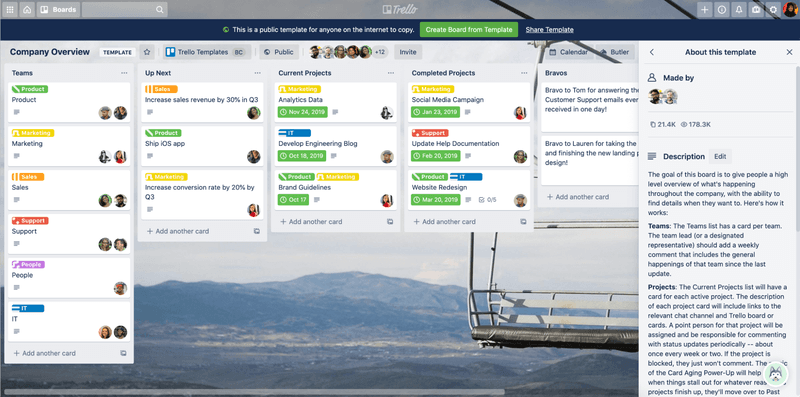
One of the most popular kanban tools is Trello which facilitates task management by providing a typical to-do list.
Scrum Framework should be implemented where the product requirements are rapidly changing.
If the team has a process that works well but could be improved, the Kanban software development method should be used. The Kanban system enables them to improve all of their tested processes gradually.
Scrum should be implemented where there are fewer team members. If you are working with a large team, you should go with kanban. It is suitable for mature groups.
If you need regular customer feedback, you should go with scrum.
In scrum, the team commits to provide a small increment at the end of each sprint. Activities aren't tied together like this in Kanban. So, you can choose kanban when you need more flexibility because in scrum project’s scope doesn’t change much.
When you need a more structured method and maintain strict deadlines, choose scrum.
Scrum has more transparency because it keeps everyone on the same page with its events. Sometimes, it can be challenging to keep track of all moving parts in kanban.

What if you can’t choose? Do you know there is also the term ‘Scrumban’ which combines features of scrum and kanban?
Scrumban provides scrum structure with the flexibility and visualization of kanban, making it a highly versatile approach to workflow management. Teams frequently use Scrumban as a bridge between a less mature and more mature Agile discipline.
There is no ultimate decision of choosing any framework here.
Both Scrum and Kanban are excellent methods for tackling large projects. They provide better collaboration and ensure all team members are on the same page throughout the development process.
The bottom line is to do what works for your business and your customers. But if you’re new to agile development, it can be pretty challenging.
PolyUno is a customer-focused agency that provides quality software solutions based on project schedules, deliverables, and customer expectations.
What are you waiting for? Request a quote now!